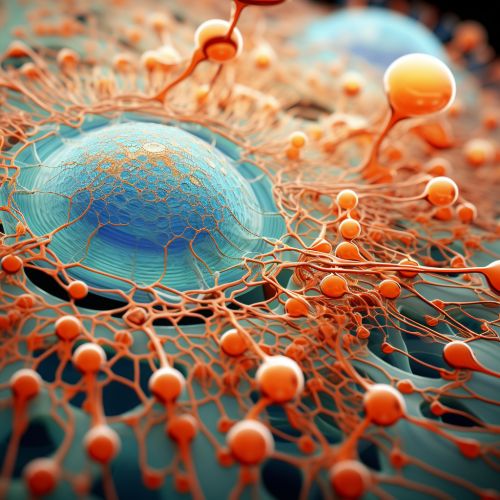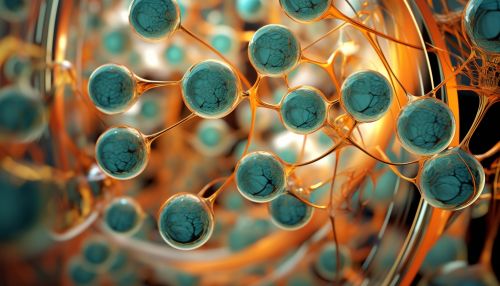Cellular Respiration
Introduction
Cellular respiration is a fundamental metabolic process that occurs in the cells of organisms, converting biochemical energy derived from nutrients into adenosine triphosphate (ATP), and subsequently releasing waste products. This process involves a series of catabolic reactions, which essentially break down large molecules into smaller ones, releasing energy in the process. This process is often referred to as aerobic respiration, given the requirement of oxygen (the root 'aer' originates from the Greek word for "air").


Classification of Cellular Respiration
Cellular respiration can be classified into three primary types: aerobic respiration, anaerobic respiration, and fermentation.
Aerobic Respiration
Aerobic respiration is a process where cells utilize oxygen to convert glucose into energy. This form of respiration is prevalent in most eukaryotic cells, such as those present in plants and animals. Aerobic respiration comprises three stages: glycolysis, the Krebs cycle, and the electron transport chain.
Anaerobic Respiration
Anaerobic respiration is a process where cells generate energy in the absence of oxygen. This form of respiration is common in prokaryotic cells, such as bacteria and yeast. Anaerobic respiration involves the process of glycolysis and fermentation.
Fermentation
Fermentation is a variant of anaerobic respiration where glucose is partially broken down without the aid of oxygen. Fermentation can be further classified into two types: alcoholic fermentation and lactic acid fermentation. Alcoholic fermentation is utilized by yeast cells and certain bacteria to produce ethanol and carbon dioxide. Lactic acid fermentation is employed by muscle cells when the oxygen supply is insufficient.
Phases of Cellular Respiration
Cellular respiration comprises four main stages: glycolysis, the link reaction, the Krebs cycle, and the electron transport chain.
Glycolysis
Glycolysis is the initial stage of cellular respiration and takes place in the cytoplasm of the cell. This stage involves the breakdown of one molecule of glucose, a six-carbon sugar, into two molecules of pyruvate, a three-carbon compound. This process also results in the production of two molecules of ATP and two molecules of NADH, an electron carrier.
Link Reaction
The link reaction, also referred to as the transition reaction, is the second stage of cellular respiration. This stage occurs in the mitochondria of the cell. During this stage, each pyruvate molecule from glycolysis is converted into a molecule of acetyl CoA, a two-carbon compound, and a molecule of carbon dioxide.
Krebs Cycle
The Krebs cycle, also known as the citric acid cycle or the tricarboxylic acid cycle, is the third stage of cellular respiration. This stage also takes place in the mitochondria of the cell. During this stage, each acetyl CoA molecule from the link reaction is broken down into two molecules of carbon dioxide. This process also results in the production of one molecule of ATP, three molecules of NADH, and one molecule of FADH2, another electron carrier.
Electron Transport Chain
The electron transport chain is the final stage of cellular respiration. This stage occurs in the inner membrane of the mitochondria. During this stage, the NADH and FADH2 molecules produced in the previous stages transfer their electrons to a series of proteins in the membrane. These electrons are then used to pump hydrogen ions across the membrane, creating a gradient. This gradient is used to produce ATP.
Energy Production
The primary objective of cellular respiration is to produce ATP, the energy currency of the cell. The total amount of ATP produced during cellular respiration can vary, but up to 38 molecules of ATP can be produced from the breakdown of one molecule of glucose.
Regulation of Cellular Respiration
Cellular respiration is a tightly regulated process that is controlled by several mechanisms. These mechanisms include feedback inhibition, where the end product of a pathway inhibits an enzyme that acts early in the pathway, preventing overproduction of the product. Other regulatory mechanisms include the availability of substrates and the presence of certain hormones.
Significance of Cellular Respiration
Cellular respiration is vital for life as it provides the energy required for all the processes that occur within a cell. This includes the synthesis of proteins, the transport of molecules across cell membranes, and the maintenance of cell structure and function.
